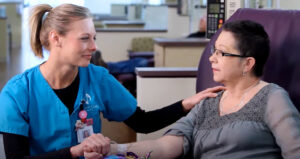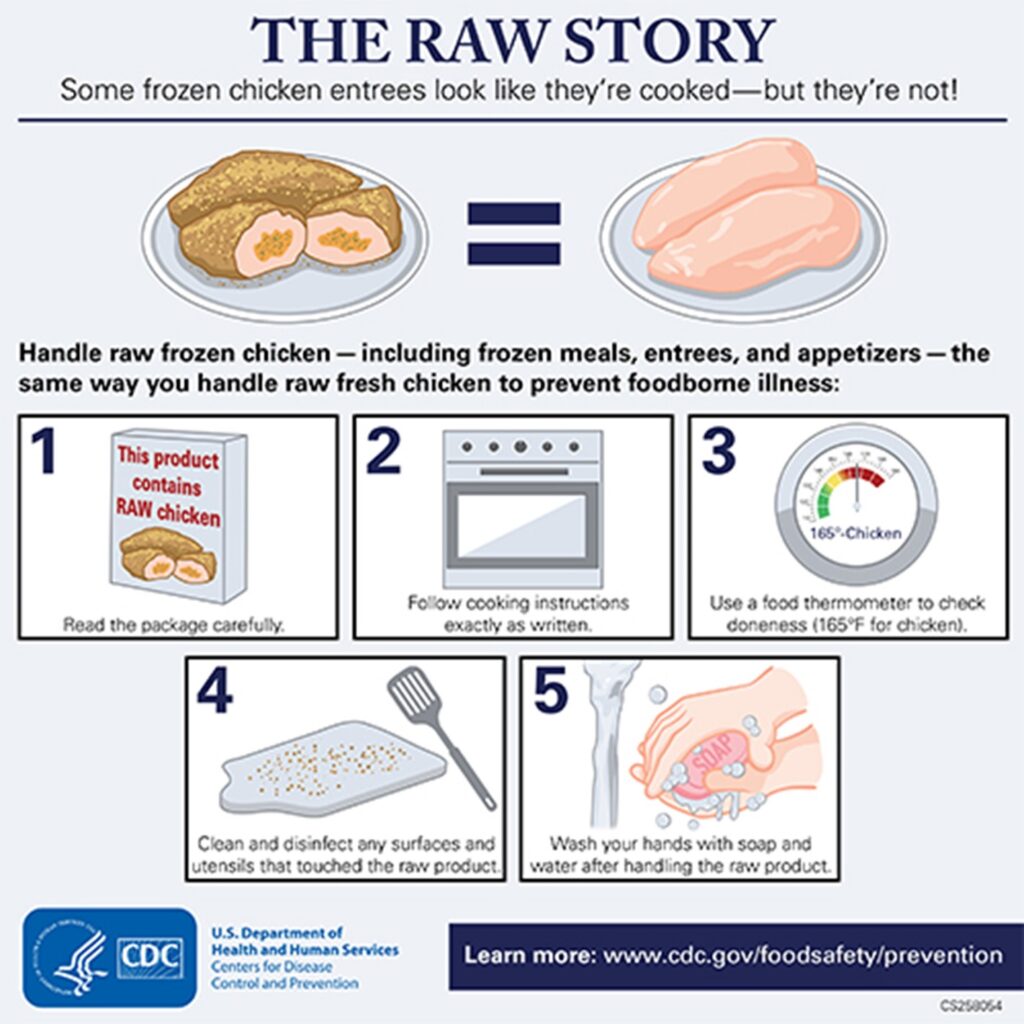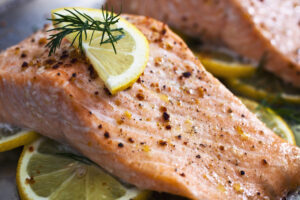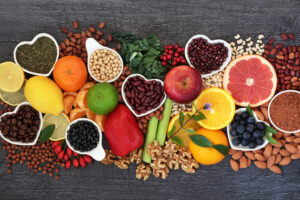If you are like me, chicken doesn’t get much love throughout the year. When I read, that September is designated to celebrate the “lowly chicken” I knew I had a great topic for this month’s newsletter.
You have probably noticed that we frequently talk about food safety. Chicken is one of those foods that deserves more caution than many people are aware of.
Should You Wash Chicken?
No. Do not wash chicken (or any other raw meat for that matter). Rinsing raw chicken in the sink can spread harmful bacteria all over and around the sink, as well as spray water droplets outside of the sink and into other areas of your kitchen. According to the USDA, water can distribute bacteria up to a whopping 3 feet around the sink. This means it can easily reach you, countertops, kitchen towels, and any other food or produce that’s around, which is particularly dangerous for any food that will be served raw, like a salad.
And even if you think you can contain any possible water spray that could reach outside of the sink, bacteria can still easily contaminate the sink itself and cross-contamination is nothing to mess with as it can lead to illness. Rest assured, the heat from cooking will kill any harmful bacteria. In fact, heat is the only way to destroy bacteria that might be present, according to the USDA—this is why it’s important to cook chicken to the safe temperature of 165 F.
However, if you’re still feeling icky about the packaging juices on the meat, pat the chicken dry with a paper towel right in its packaging instead of rinsing it. That way, you avoid the risk of contaminating the sink and anything else in its vicinity. Bonus: Patting the meat dry in the container saves you from having to clean a cutting board. It also helps any seasoning stick to the meat while helping the chicken brown better.
Handling Raw Chicken
Follow these tips for the best way to prep and on safely handle and cook with raw chicken. After all, no one has time for cross-contamination.
- Food safety begins from the second you unpack your grocery bags. Always place raw chicken on the lowest shelf of the refrigerator or freezer, preferably in the disposable plastic bag you might have used at the grocery store. Storing it on the lowest shelf prevents the juices, which can carry harmful bacteria, from dripping onto other food.
- The USDA recommends immediately refrigerating raw chicken at a temperature of 40 F or below and using it within one to two days. If you don’t plan on using your chicken immediately, you can also pop it in the freezer at 0 F.
- Use different and designated cutting boards for raw chicken and vegetables. A cutting board used for raw chicken should be thoroughly sanitized after use. If you’re sticking to one cutting board, prep any other food on the clean cutting board first, especially any food that will be consumed raw, before preparing raw chicken on it.
- Wash your hands thoroughly after handling raw chicken, as well as any utensils used.
- If you’re not cooking chicken from package to pan, always use a separate clean plate to rest the cooked meat. Don’t use the same plate that was initially holding the raw chicken. This goes for tongs and spatulas, too!
- Use a clean digital food thermometer and insert it into the thickest part of the chicken, avoiding bone, until it reaches 165 F. This is the most accurate way to determine if the chicken has reached a safe temperature. It is unreliable to judge doneness by the pinkness of the meat. Always wash the thermometer after use.
- If you’re ever in doubt about how long it might take to cook a whole chicken or chicken parts, the USDA has a very handy chart.






